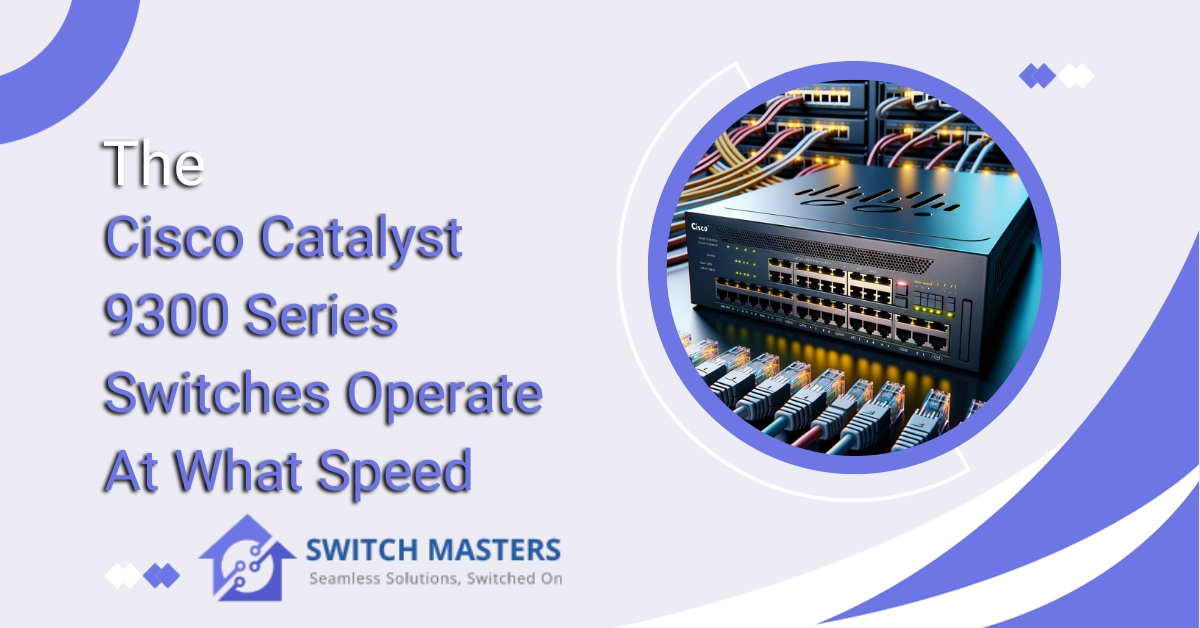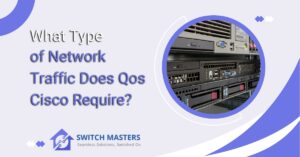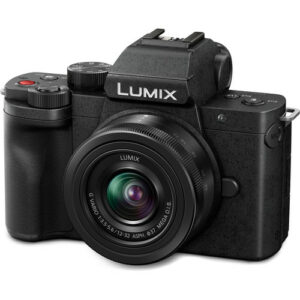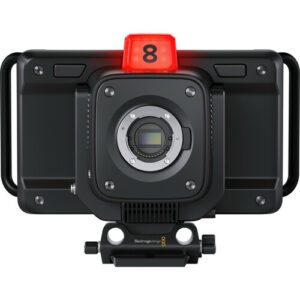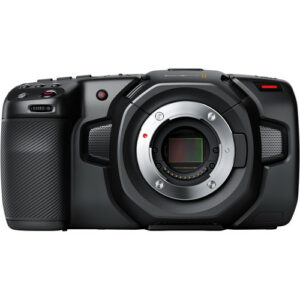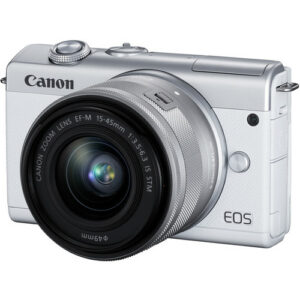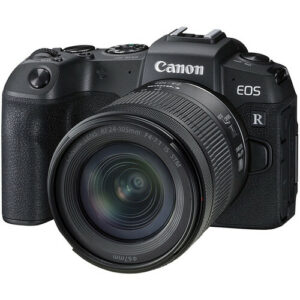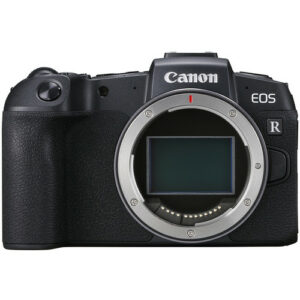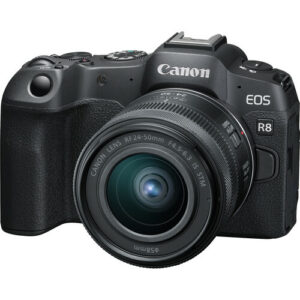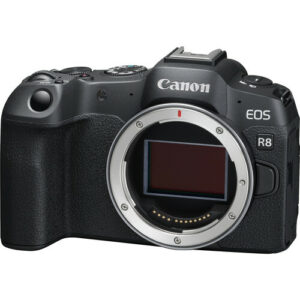The Cisco Catalyst 9300 series switches operate at what speed? Discover the impressive range of speeds, from Gigabit Ethernet to Multigigabit and even up to 100 Gigabit Ethernet, tailored to meet your diverse networking needs.
Introduction
There is no doubt that the Cisco Catalyst 9300 series switches have become an important part of modern networking solutions. These advanced switches provide a range of speeds, allowing them to cater to the needs of a variety of networks.
Whether you require Gigabit Ethernet, Multigigabit Ethernet, or even 100 Gigabit Ethernet, the Cisco Catalyst 9300 series is designed to meet the demands of today’s high-performance, data-intensive applications. In this article, Cisco’s Catalyst 9300 series switches provide insight into how they enable organizations and businesses to be connected at an impressive speed.
Overview 9300
In today’s fast-evolving enterprise landscape, network access has undergone a transformation, evolving from basic connectivity to a robust, intelligent, and high-speed foundation. As a result of innovations in security, cloud computing, mobility, and the Internet of Things (IoT), these changes have been accelerated. Both Cisco® Catalyst® 9000 hardware and software were designed to meet today’s and the future needs of organizations.
The Challenge of Wireless Technology
A pivotal trend in the industry has emerged with wireless technology, presenting a complex challenge for enterprise IT organizations. As a result of the rapid development of this technology and the exponential increase in mobile devices with high-performance requirements, the network infrastructure landscape and reliability are being reshaped. Stacking offers a pay-as-you-grow model that can accommodate a diverse range of evolutionary architectures and necessitates the reevaluation of conventional network models.
Meeting the Demands of Gigabit Evolution
With the advent of Gigabit’s evolution in both wired and wireless access layers, user and application demands are escalating towards high-speed, low-latency data switching for optimal performance. Cisco has engineered a robust system architecture to support these advancements. The Cisco Catalyst 9000 family of switches has been meticulously designed to cater to these demands.
As part of the Cisco Unified Access® Data Plane (UADP), a modular Cisco IOS® Software version will be provided along with an application-specific integrated circuit (ASIC), which is equipped with an x86 CPU in order to meet future network requirements. In addition to providing platform, software, and network resiliency at the access layer, Cisco Catalyst 9300 Series Switches feature Cisco StackWise®-1T, Cisco StackWise®-480, and Cisco StackWise®-320.
StackWise-1T, StackWise-480, and StackWise-320 represent the industry’s highest-density stacking bandwidth solution, complemented by a flexible uplink architecture. This white paper explores the features and benefits of the 9300 series.
The Cisco Catalyst 9300 series switches operate at what speed?
A crucial factor in the efficiency of operations in the realm of networking is speed. In response to the demands of modern connectivity, Cisco has launched the Catalyst 9300 series switches, which are designed to meet those demands. However, the burning question remains: what speed is supported by these switches?
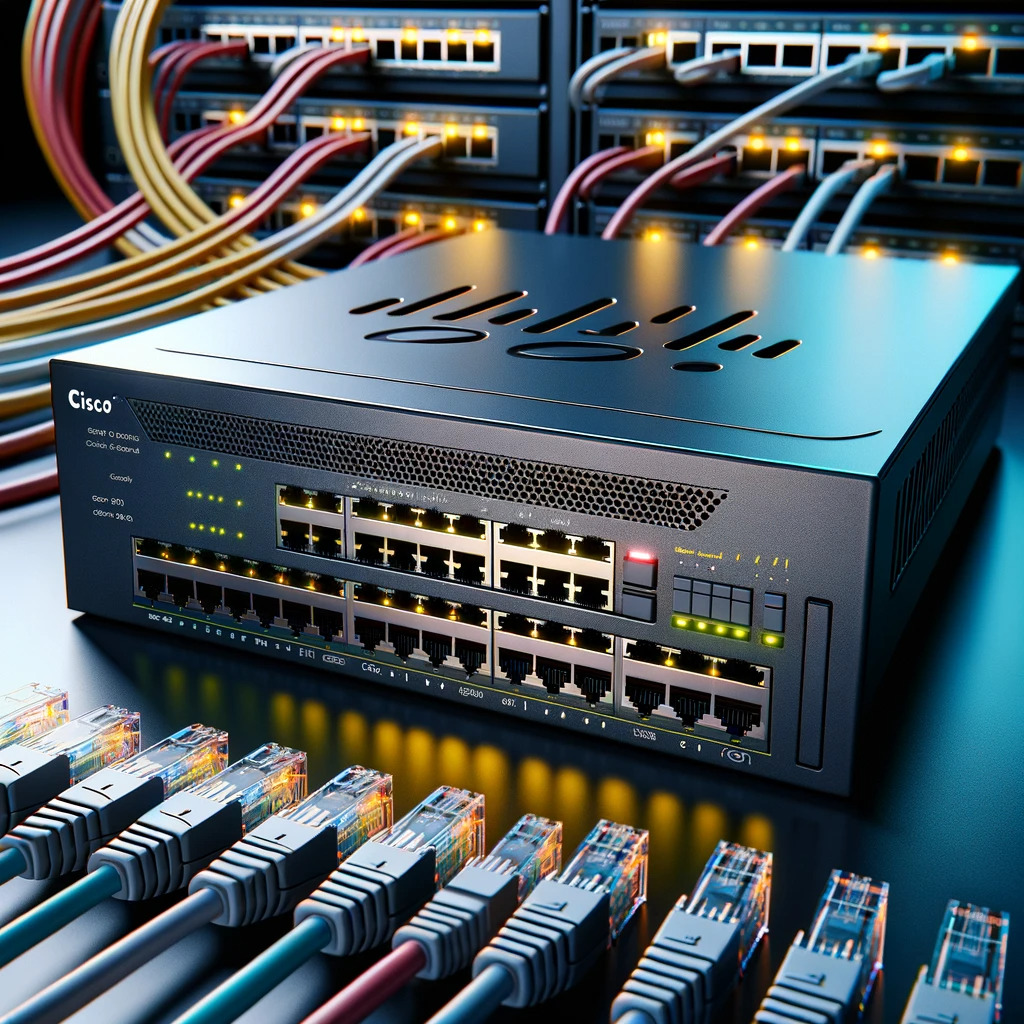
Understanding Cisco Catalyst 9300 Series Switches Speed:
Gigabit Ethernet (1 Gbps):
- Cisco Catalyst 9300 series models feature a significant number of Gigabit Ethernet ports.
- Data can be transmitted at a rate of 1 gigabit per second (Gbps) through these switches.
- It is ideal for businesses and organizations that require high-speed data transfers in order to ensure seamless operations.
Multigigabit Ethernet (2.5, 5, and 10 Gbps):
- Multigigabit Ethernet is available from Cisco for environments requiring even higher speeds.
- Switches of this type can operate at speeds as high as 2.5 Gbps, 5 Gbps, and even 10 Gbps.
- It is ideal for situations where large volumes of data need to be transmitted rapidly, such as video streaming and data center applications.
25, 40, and 100 Gigabit Ethernet:
- Cisco Catalyst 9300 switches support higher speeds for data-intensive and high-performance environments.
- Data-intensive tasks like ultra-HD video conferencing and cloud computing can be handled seamlessly with these switches operating at 25, 40, or 100 Gbps.
NBASE-T Technology: A Game-Changer for Speed Enthusiasts
Speed is king in the rapidly evolving world of networking. From streaming high-definition content to seamless online gaming, the demand for faster connections is growing. NBASE-T technology is poised to change the way we experience network speed forever.
Unleashing Unprecedented Speeds:
NBASE-T technology is an innovative networking standard that enables blazing-fast speeds through existing twisted-pair copper cabling infrastructure. A typical copper cable is capable of transmitting up to one gigabit per second (Gbps). NBASE-T technology, however, overcomes this barrier by enabling speeds of 2.5 Gbps, 5 Gbps, and even 10 Gbps over these same copper cables.
Compatibility and Future-Proofing:
As a result of NBASE-T technology’s backward compatibility, it is one of the most remarkable aspects of the technology. As a result, it is compatible with existing Ethernet infrastructure, allowing users to upgrade their network speeds without the need for costly cable replacements. As a result of this compatibility, NBASE-T technology can be utilized by businesses and individuals without any difficulties.
Applications Across Industries:
Various industries are benefited by NBASE-T technology, including businesses, educational institutions, healthcare facilities, and others. As an example, NBASE-T technology can improve productivity and workflow efficiency in a corporate setting by enhancing data transfer speeds. As part of the education sector, it can facilitate seamless online learning experiences, ensuring uninterrupted access to educational materials for students. Furthermore, rapid data transfer is crucial for sending large medical imaging files quickly and accurately in the healthcare industry.
Gaming and Entertainment:
With NBASE-T technology, avid gamers and entertainment enthusiasts will have the opportunity to experience lag-free online gaming experiences and stream 4K and 8K content without any difficulty. It is a game-changer in the truest sense. In the realm of high-speed entertainment, this technology opens up a world of possibilities for gamers and content creators alike, allowing them to push the boundaries of what’s possible.
Fiber Optics: Pushing the Speed Limits Further
In the ever-evolving landscape of data transmission, fiber optics stands as a beacon of innovation, revolutionizing the way information is sent and received. As a result of the relentless pursuit of speed, significant advances have been achieved in this field, pushing the boundaries of what was thought possible.
The Power of Light:
It is the extraordinary power of light that is at the heart of fiber optic technology. Unlike traditional copper-based transmission methods which utilize electrical signals, fiber optics transmit data using pulses of light. In consequence of this fundamental change in transmission medium, significant speed enhancements and virtually unlimited bandwidth are possible.
Unprecedented Speeds:
With fiber optic cables being able to transmit data at the speed of light, they can reach speeds of gigabits and even terabits per second. Data transmission speed has reached unprecedented heights due to fiber optic technology. This means that massive volumes of data can be transmitted in the blink of an eye, making fiber optics indispensable for industries that rely on rapid and reliable data communication.
Low Latency and High Bandwidth:
Aside from its remarkable speed, fiber optics also offers low latency and high bandwidth. In applications such as financial trading, healthcare imaging, and online gaming, real-time data transmission and high data volumes are critical, making it an ideal choice.
Global Connectivity and Future-Proofing:
The fiber optic network is the backbone of global communication systems, connecting continents and enabling seamless information exchange between them. Due to the flexibility of fiber optics, networks can easily be upgraded to accommodate even higher speeds as the demand for speed continues to rise, ensuring long-term future-proofing of the infrastructure.
Applications Across Industries:
Various industries are impacted by fiber optics, including telecommunications, data centers, healthcare, and finance. Streaming services and lightning-fast internet speeds are enabled by fiber optics in telecommunications. A significant function of fiber optics in healthcare is the transmission of high-resolution medical images to assist with diagnosis and treatment planning. Additionally, fiber optics are crucial to the execution of high-frequency trades with split-second accuracy in the finance industry.
10 Facts about 9300 Series switches
A general table based on commonly known facts about Cisco Catalyst 9300 series switches.
| Speed Option | Data Transfer Rate |
| Gigabit Ethernet (1 Gbps) | Up to 1 gigabit per second |
| Multigigabit Ethernet | 2.5 Gbps, 5 Gbps, 10 Gbps |
| 25 Gigabit Ethernet | Up to 25 gigabits per second |
| 40 Gigabit Ethernet | Up to 40 gigabits per second |
| 100 Gigabit Ethernet | Up to 100 gigabits per second |
FAQ’s
What is the speed of the Catalyst 9300 port?
The Cisco CatalystTM 9300 48-Port Switch offers 480 Gbps stacking bandwidth, making it ideal for establishing Ethernet networks in many industries, including information technology. In conjunction with a router, this networking switch ensures optimal internet speeds and facilitates rapid data transmission.
How fast is the C9300 NM 4m?
Featuring a maximum data transfer rate of 1 gigabit per second (Gbps), the Cisco C9300 NM 4M ensures a fast and efficient network.
How much power does a Cisco 9300 switch use?
With the Cisco Power Calculator for the C9300-48U model and incorporating a few POE devices, it is determined that the switch consumes approximately 135 watts without POE, and 662.40 watts with POE.
What is the speed of a switch port?
Typically, switch ports are capable of transmitting data at speeds of 10Mbps, 100Mbps, or 1000Mbps. By default, switch ports automatically adjust their speed based on the signalling they receive from the connected device.
What is Catalyst 4500 speed?
A number of Cisco Catalyst 4000/4500 Series switches offer advanced switching solutions that seamlessly enhance bandwidth with the addition of ports. In addition to providing 48 million packets per second (Mpps) and 64 gigabits per second (Gbps) of non-blocking Cisco Express Forwarding (CEF) Layer 2/3/4 switching based on Cisco Express Forwarding (CEF), it also features intelligent services.
Conclusion
The Cisco Catalyst 9300 series switches stand as a testament to the relentless pursuit of speed and efficiency in the realm of networking. Designed to meet the diverse and ever-growing demands of modern connectivity, these switches offer a range of capabilities, including Gigabit Ethernet, Multigigabit Ethernet and 100 Gigabit Ethernet.
With a range of speed options available to cater to various networking requirements, the Cisco Catalyst 9300 series switches are ideal for business operations, data-intensive tasks, or high-performance applications. In today’s fast-paced digital world, organizations can ensure their networks operate at maximum efficiency by choosing the appropriate speed option, paving the way for seamless data transmission and connectivity.

